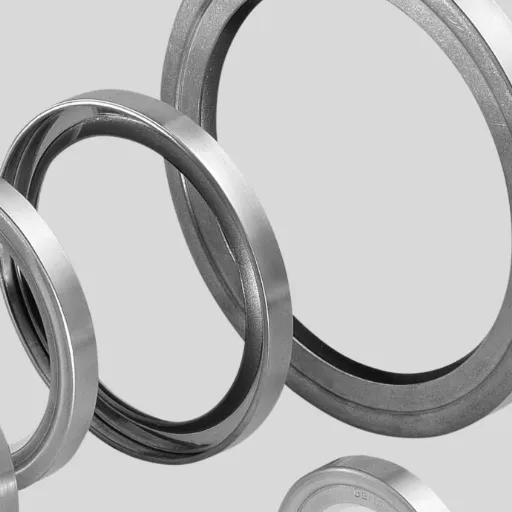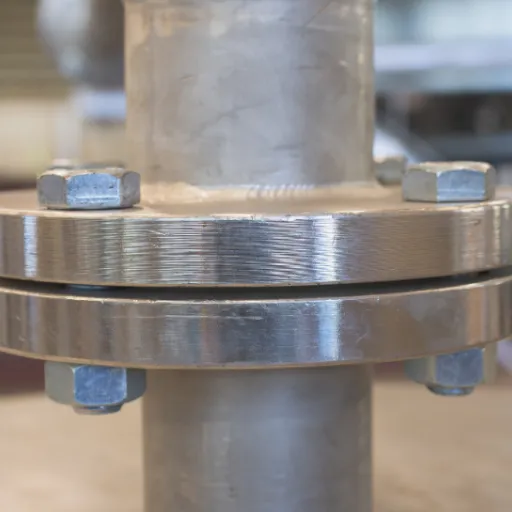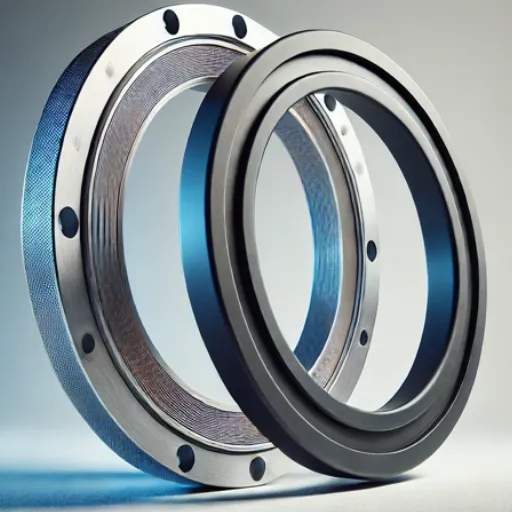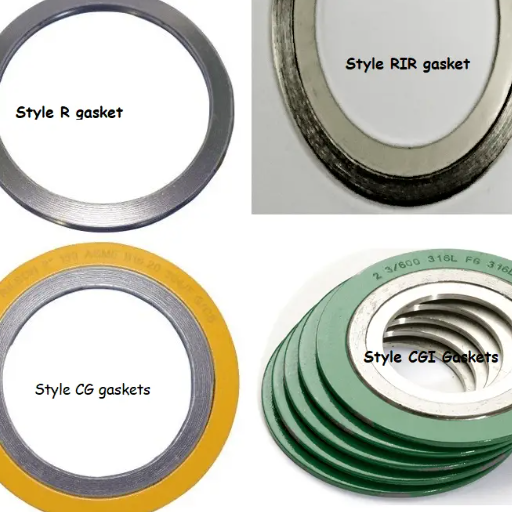Pipe flanges are a very important entity in several industrial processes, connecting pipes with valves, pumps, and other equipment to assemble fluid systems that are safe and efficient. With so many kinds of flanges available, each designed for certain applications and conditions, it is easy to get confused as to which would suit best for your requirements best. This guide places all the information about pipe types of flanges explained, their characteristics, and when they would be the best time to use a particular type, in a table for easy digestion. It is informative not only a seasoned engineers but also for those who are still studying piping systems so that they can make an informed decision to ensure project success.
Introduction to Flanges

Flanges are very important devices used for joining pipes, valves, pumps, and other equipment in the piping system to impart strength and structural integrity to the system and allow easy assembly, disassembly, and maintenance of the system. Generally, either the flange and pipe are welded together, or the flange is threaded onto the pipe, while both use bolts for final connection. They are designed to give a firm and leak-proof joint, with the flexibility that can be taken down for repairs or modifications. They are usually made of stainless steel or carbon steel and sometimes alloy steel so that they satisfy pressure and temperature requirements as per their application.
What is a Flange?
Flanges come in several varieties, with each one designed to suit certain applications in processes and meet specific requirements of industrial systems. The most common types are slip-on, weld neck, blind, socket weld, lap joint, and threaded.
Slip-on Flanges are easy to install because they slide over the pipe on which they are fitted and then welded both inside and outside for a secure fit. They are used for low-pressure systems.
Weld Neck Flanges are used for high-pressure applications. They have a taper at the hub that transfers stress to the pipe and lessens the chance of its failure.
Blind Flanges are used to close off the ends of piping systems or pressure vessel openings with the purpose of allowing future expansions or inspections.
Socket Weld Flanges are common for smaller pipes and high-pressure systems. The pipe is inserted into a recessed area of the flange and welded.
Lap Joint Flanges are used where frequent dismantling is required. They work in conjunction with a stub end, making them economical and flexible.
Threaded Flanges need no welding and are apt for low-pressure systems or where welding is just impractical.
The material that goes into a flange, its size, the pressure rating (graded into classes such as 150, 300, 600, etc.), and aptitude to withstand the alleged operating conditions of the present system are the fundamental factors in giving way to the correct selection of flat flanges. Choosing the right type ensures safety, durability, and efficiency in a huge spectrum of industrial applications.
Importance of Flanges in Piping Systems
The flanges, being indispensable components of piping systems, shall serve for assembly and disassembly of the pipeline by making a secure and leak-proof connection. It is important that they help in efficient maintenance, inspection, and modification services of complex pipelines so that dismantling does not have to be extended in whole or even in part. Flanges may be modified for temperatures, pressure, or chemical exposures, giving versatility in many industries in areas such as oil and gas, chemical processing, power generation, and water treatment.
In recent years, the technology of flanges has been enhanced with materials developed to be anti-corrosive in harsh atmospheres, thus increasing the longevity of critical infrastructures. Also, standardization maintained by bodies such as ASME and ISO enhances system compatibility among flanges of the world, yay easier integration, and replacements. Studies have revealed that further treatment is obtained with properly chosen flanges of the highest quality proper rating, resulting in decreased chances of system failures, hence majorly improving operational safety and reliability. All these consideration points give strong support to the importance of flanges in modern piping systems in terms of effectiveness and sustainability.
Basic Flange Types
Flanges are available in several types, each of which is suited for specific uses depending on the application, pressure requirements, and method of connection. Some of the widely used types of flanges include:
Weld Neck Flange
This flange has a long, tapered hub that is welded to the pipe. Ideally, it would be used in high-pressure systems and critical applications because it offers excellent distribution of stress and resistance to mechanical loads.
Slip-On Flange
A slip-on flange goes over the pipe and is easy to install and weld in place. Typically, lesser in cost than the weld neck flange, this one finds its use in much lower-pressure systems and moderate temperature ranges.
Socket Weld Flange
This flange is mainly for smaller diameter pipes, allowing the pipe to be inserted into a recessed area and welded around it. It is generally used when high pressures are involved, and a stronger connection is required.
Blind Flange
Used as a closure to block flow in the pipes, blind flanges are of utmost importance when sealing off a system for maintenance or testing. They resist immense pressure and are usually used in high-pressure environments.
Threaded Flange
This flange is possibly the only type that will connect to a pipe without being welded, hence the convenience for quick assembly and disassembly. You will find it mostly used on low-pressure or non-critical systems where welding is not practical.
Lap Joint Flange
Used with a stub end, this flange type is ideal for systems that require frequent disassembly. Its loose design helps reduce cost and allows for easy alignment and is commonly used in piping systems for low-pressure operation.
Each flange type fulfills varying requirements on the basis of different operational requirements and standards used in diversified industries, thus giving flexibility and adaptability in various applications. The right type of flange selected maximizes the performance and upholds the integrity of the system.
Common Types of Flanges Explained
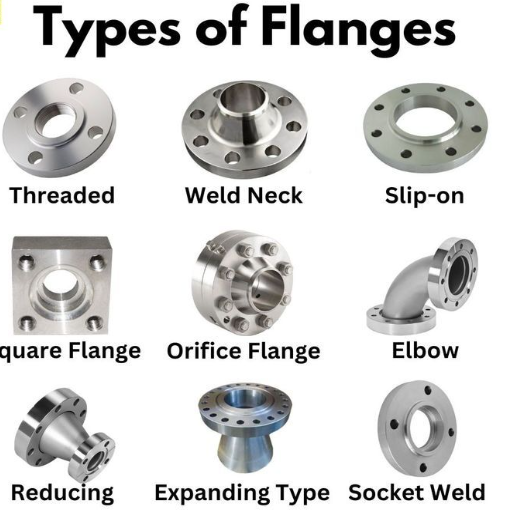
| Type | Use | Strength | Welds | Pressure | Cost |
|---|---|---|---|---|---|
| Weld Neck | High-pressure | High | Butt | High | High |
| Slip-On | Low-pressure | Medium | Fillet | Low | Low |
| Socket Weld | Small pipes | Medium | Fillet | Medium | Medium |
| Lap Joint | Disassembly | Low | None | Low | Low |
| Threaded | No welding | Low | None | Low | Low |
| Blind | Sealing ends | High | None | High | Medium |
Weld Neck Flanges
Weld neck flanges are designed with a long-tapered hub that provides reinforcement and stress distribution in high-pressure and high-temperature applications. They are welded directly to the pipe, creating a robust and leak-proof connection suitable for critical applications in industries such as oil and gas, petrochemicals, and power generation. These flanges are highly valued for their ability to withstand extreme conditions, reduce localized stress, and maintain structural integrity over time. Offered in various materials and dimensions, weld neck flanges comply with international standards such as ASME and ANSI, ensuring compatibility and reliability across a wide range of piping systems. Their design minimizes turbulence and erosion, making them an optimal choice for systems carrying hazardous or volatile substances.
Slip-On Flanges
Slip-on flanges are an economical and versatile option commonly employed in all manner of low-pressure piping systems. In contrast with weld neck flanges, they are intended for slipping over the pipe and welding on the inside and outside to give a secure and leak-proof connection. Slip-on flanges are manufactured in myriad sizes and materials, and worldwide recognized standards such as ASME, ANSI, and ASTM are followed so that they can be applied and trusted in any system. These flanges find the best use where constraints in space or budget existlike in water, gas, and low-pressure oil systems. Their very simplicity to install and the lower price in the beginning-rather than other flanges-makes them more favored by engineers on projects where the economy of the project is important along with the ease of implementation.
Blind Flanges
Blind flanges are solid disc-shaped components, primarily used in sealing the ends of piping systems or pressure vessel openings. They are essential for stopping the flow to carry out pressure tests as well as for future access to the sealed-off areas of a system. Made from materials such as stainless steel, carbon steel, or alloy steel, blind flanges are designed to withstand a wide range of pressure and temperature and are thereby available for different applications, including high-pressure ones. These flanges are also offered in different sizes and pressure ratings and mostly conform to widely accepted standards such as ASME, ANSI, and API. Certainly, they are indispensable when it comes to being relied upon in the oil and gas industry, chemical processing, and water treatment.
Flange Dimensions and Sizes

Flanges are specified and sized to be compatible with application and system configurations. When specifying flange dimensions, it considers outside diameter (OD), bolt circle diameter (BCD), bolt quantity, and flange thickness. Pressure ratings vary from softer 150s to more tempered 300s, 600s, and beyond, subject to system operational pressure. One can rely on the standards listed in ASME B16.5 for exact measurements and expected reliable performance throughout various industries.
Understanding Flange Face Types
Usually, flange face types play an important role in creating a tight, secure connection between components of piping. Some common flange faces are:
Flat Face (FF) – With a flat, smooth surface, the flat face flange is often used in lower-pressure applications and where the mating equipment has the same flat face.
Raised Face (RF) – Perhaps one of the most widely seen flange faces, it provides a small raised area around the bore, so the gasket has a good seat on it. This kind of design is best suited for medium to high-pressure systems.
Ring-Type Joint (RTJ) – These are good for high-pressure and high-temperature applications. RTJ flanges are cut with a grooved channel for the metal ring gasket, thus allowing for a strong and precise seal.
Male and Female (M&F) – This type has one flange with a projecting face (male) and the other with a recessed face (female), which fit together to prevent gasket movement during installation.
Tongue and Groove (T&G) – One flange has a tongue that fits into a groove in the other. This type assures precise alignment of the gasket and sealing of the system. T&G is generally used where accurate positioning is critical.
A correct flange face type is selected upon certain pressure considerations, temperature, and material compatibility to ensure a competent connection.
Standard Flange Sizes
Flanges are produced in a series of standardized sizes to allow for use in various piping systems and industrial demands. These are known to feature nominal pipe size (NPS) and class ranking, which corresponds directly with pressure and temperature tolerance capability. For instance, in most common applications, standard flange sizes range between NPS ½ inch to NPS 24 inches, with further customizations made for industrial applications.
The following standards are generally accepted for flange sizing:
ASME B16.5: Is usually cited for flanges from ½ inch to 24 inches supporting pressure classes ranging from Class 150 through 2500. It is extensively used in oil, gas, and chemical industries.
ASME B16.47: It covers larger diamond flanges (NPS 26 in. – 60 in.) with pressure classes from Class 75 through 900, ideal for high-capacity systems.
DIN/EN Standards: These in Europe mostly provide metric flange dimensions and ratings peculiar to regional piping systems. Sizes and pressure ratings are frequently stated in PN (Pressure Nominal).
API 6A: Common mostly in the petroleum industry with flanges for high-pressure and temperature applications ranging from 1 ½ in. to 20 in.
Specific dimensions such as flange thickness, bolt circle diameter, and outer diameter are varied within standards to meet adherence into different operational environments. Thus, being aware of these differences helps engineers pick the right flange size to guarantee system integrity under the required operating conditions.
Flange Thickness and Ratings
The thickness of the flange is a performance-related characteristic that bears great importance, especially for piping under high pressures and extreme temperatures, being a factor that affects the ability of a flange assembly to meet design requirements. The thickness of a flange is directly related to its pressure rating, which is the rating at which it will operate at a given temperature. Common pressure ratings for flanges are Class 150, 300, 600, 900, and so on, depending upon their ability to withstand pressures. These ratings are standardized to allow comparison under common codes such as ASME B16.5 for pipe flanges and flanged fittings.
Usually, the Class 150 flange is thinner in construction compared to the Class 600 flange since the latter is made for higher pressures. The grade of the material of which a flange is made of will also affect the thickness required of the flange, since different materials have different strengths and temperature stabilities.
While selecting flange types for any service, the consideration of pressures of operation and temperatures involved should be taken into account since at elevated temperatures, the strength of the materials reduces. Considering all these conditions, a competent engineer should be able to select the best suitable flange to guarantee no failure, damage, or disruption of the system by unsafe or improper flange selection.
Special Types of Flanges

Special types of flanges are designed to suit particular industrial requirements and conditions. Here are some of the very common examples:
Slip-On Flanges: Easy for installation, they are slipped over the pipe and welded; used in low-pressure applications.
Weld Neck Flanges: In high-pressure situations, a weld neck flange provides a strong connection through the beveled neck, which is welded to the pipe.
Blind Flanges: Used at the end of a pipe or pressure vessel to ensure that no flow occurs.
Socket Weld Flanges: Used for smaller sizes of pipes in high-pressure applications; these flanges have a socket in which the pipe is inserted before welding.
Lap Joint Flanges: Often used with a stub-end; the flange is not fixed to the pipe but allows quick dismantling for maintenance.
Threaded Flanges: These establish a connection without welding. They are thus suitable for low-pressure and noncritical applications.
The usage of these depends on what is needed in the operation, such as pressure, temperature, maintenance, etc.
Threaded Flanges
Threaded flanges are among the vital elements within piping systems where welding cannot be performed, or it is impractical. Internally threaded and designed for this purpose, they can be connected with pipes without permanent joining methods. Threaded flanges are most effective in conditions of low pressure and low-temperature considerations, as their thread design allows for the installation, adjustment, and removal of the flanges with ease. Since their installation reduces the chances of sparking, a crucial factor when handling flammable substances such as those used in gas and oil industries, it assigns they play an important role in such industries. Threaded flanges come in carbon steel, stainless steel, and alloy steel, which enables them to meet several operational requirements. Always ensure that the threading standards and dimensions of the flange correspond to those of the mating piping components for good operating performance.
Lap Joint Flanges
Lap joint flanges are a very flexible and good choice for piping systems that are disassembled frequently, for purposes of inspection or maintenance.
There are two parts to this flange. The stub end is welded to the pipe, and the flange ring floats on the pipe. The rings are required to complete the process of assembly by sliding over the pipe to fit onto the stub end.
Generally, lap joint flanges are made with materials such as carbon steel, stainless steel, and alloy steel, which are resistant to corrosion and apt for the demanding environment. These are the primary benefiting features: lap joint flanges can be connected to a pipe without welding the flange permanently onto it because this way is cheaper due to the fact that the flange material need not match the piping material.
Due to their adaptability and ease of use, lap joint flanges find application in the chemical processing, oil and gas, and food production industries.
Besides being able to re-use the flange in other systems, which over time further reduces cost, they claim added benefit in applications where expensive materials are involved.
To gain the highest dependability, proper sealing materials, such as gaskets, are used, and the systems are inspected on a regular basis to ensure the integrity of these systems.
Socket-Weld Flanges
Socket-weld flanges are most often used in high-pressure and small-diameter pipe work systems because their construction provides higher strength and a secure connection. The flange features a socket into which the pipe is inserted prior to welding, producing a fit that is very tight and preventing leakage. It is particularly good in situations where welding is considered the best method for ensuring leak-proof service performance, such as chemical processing plants and high-pressure and cryogenic services.
A very smooth inside surface is also provided by these Socket weld flanges, if used properly; this would greatly reduce turbulence and restriction to flow inside the pipeline. Because of this they are ideal for systems where high-speed and efficient fluid transfer is very important. Socket-weld flanges are made from stainless steel, carbon steel, and alloy steel, and have excellent resistance properties from very high pressures and temperatures and chemical corrosion. Socket-weld flanges require skill and precision in installation, but because of their top-notch performance and durability, socket-weld flanges are good for a demanding industrial environment.
Flange Connections and Installation

The flanged connection is commonly applied in piping systems, valves, and other components to make a strong, leak-free connection. Flanges should be installed precisely, gasketed with the proper size, and with the right type of gasket in between. Before tightening bolts, they should have been positioned in a crisscross sequence to distribute pressure across the gasket and prevent leaks. At all times, torque specifications for bolts have to be maintained to retain good sealing. Flange connections should be inspected on a regular basis to observe any wear and to identify any potential issues that may arise over time, both of which play a role in the safe and efficient operation of the system.
Choosing the Right Gasket
It is imperative to have the right gasket in order to have a secure and leak-proof system. The kind of gasket depends on the moving fluid or gas, the pressure in place, temperature conditions, and of course, the materials forming the connecting flanges. Metal gaskets and spiral wound gaskets are suitable for application in high temperature or high-pressure media while the rubber or non-metallic types cater to a low-pressure environment in which flexibility and chemical compatibility are the prime considerations. The compatibility factor against corrosive elements or environment should also be evaluated so that premature gasket failure may be avoided. Association of Standards and Mechanical Engineers (ASME) and other such standards should be used as a reference to see if the gasket fulfils the safety and functional needs of the system.
Welding and Other Connection Methods
It is said that welding is a very sturdy and reputable method to provide a permanent connection in industrial applications. As it supports strong, steam-tight bonding of pipelines, structural frameworks, and heavy equipment, it is widely used for all of these fields. Arc welding, TIG welding, and MIG welding are selected as per the material used, the design of the joint, and the operating conditions. For instance, TIG welding is preferred for applications demanding precision and clean finishes, especially with stainless steel or aluminum, while MIG welding is ideal when joining thicker materials efficiently.
Other methods of connections, such as bolted or threaded joints, are usually used for assemblies that are not to be permanent or where regular maintenance and disassembly are expected. These are very flexible and easy to employ but could be more susceptible to loosening and leakage when exposed to high vibration and pressure. The advent of technology, such as that of automated welding systems and novel joint sealing tech, continues to elevate the safety, efficiency, and durability of industrial applications. Therefore, to ensure that maximum integrity and functionality of connection methods are achieved, good consideration ought to be given to operating conditions, material compatibility, and performance requirements.
Best Practices for Flange Installation
In terms of flange installation, a few critical best practices remain my focus to warrant a reliable and durable installation. Firstly, cleaning of all mating surfaces is emphasized to prevent debris from influencing the sealing. Right after, I would torque the bolts with a calibrated torque wrench by tightening it in stages in a crisscross pattern to evenly distribute pressure around the flange. Next would be checking for gasket alignment and confirming that the appropriate gasket material was selected according to the operating conditions, such as temperature and pressure. Finally, I would always follow the manufacturer’s installation instructions and guidelines, as strict compliance with these factors considerably improves the longevity and integrity of the installation.
Reference Sources
- High Pressure Flange Design
This document provides detailed explanations of flange types and their effects.
View Source - What is a Flange
This source outlines the most commonly used flange types in the petrochemical industry, such as Welding Neck Flange, Slip On Flange, and Socket Weld Flange.
View Source - Evaluation of the Bolting and Flanges of ANSI
This document evaluates the bolting and flanges of ANSI standards, including leakage pressure and flange joint mechanics.
View Source - Top Flanges Suppliers in China
Frequently Asked Questions (FAQs)
What are the different types of flanges explained?
Flanges come in various types, each serving unique purposes in connecting piping systems. Common flange types include slip-on flanges, weld neck flanges, and blind flanges. Slip-on flanges are easy to install and are used in low-pressure applications, while weld neck flanges provide a strong connection for high-pressure systems. Blind flanges, on the other hand, are used to seal the end of a piping system. Understanding these different types of flanges is essential for proper installation and maintenance.
How do flange dimensions affect pipe connections?
The dimensions of a flange, including its diameter and thickness, play a crucial role in ensuring a proper fit with pipes or fittings. Flange size must match the outer diameter of the pipe to create a secure connection. Additionally, flange face types, such as raised face or flat face, can impact the sealing performance when a gasket is placed between the flanges. Proper flange dimensions help to prevent leaks and ensure the integrity of the piping system.
What is a weld neck flange and its uses?
A weld neck flange is a type of flange characterized by a long neck that provides a smooth transition between the flange and the pipe. This design allows for effective stress distribution and is particularly useful in high-pressure and high-temperature applications. The welding process creates a strong connection, making it suitable for stainless steel pipe systems and other materials where durability is essential. Weld neck flanges are commonly used in industries such as oil and gas, chemical processing, and power generation.
What are common flange materials used in construction?
Common flange materials include carbon steel, stainless steel, and various alloy steels. Inexpensive carbon steel flanges are often used for general applications, while stainless steel flanges offer corrosion resistance, making them ideal for harsh environments. Flanges with corrosion-resistant properties are vital in chemical processing and marine applications. The choice of flange material directly affects the performance and longevity of the piping system.
How do I choose the right flange type for my project?
Selecting the appropriate flange type depends on several factors, including the application, pressure requirements, and the type of pipe being used. For example, if you require easy assembly and disassembly, a slip-on flange may be the best choice. Conversely, for high-pressure applications, a weld neck flange would provide a secure connection. Additionally, it’s important to consider the compatibility of the flange materials with the pipe and the intended environment to ensure a reliable and safe installation.

